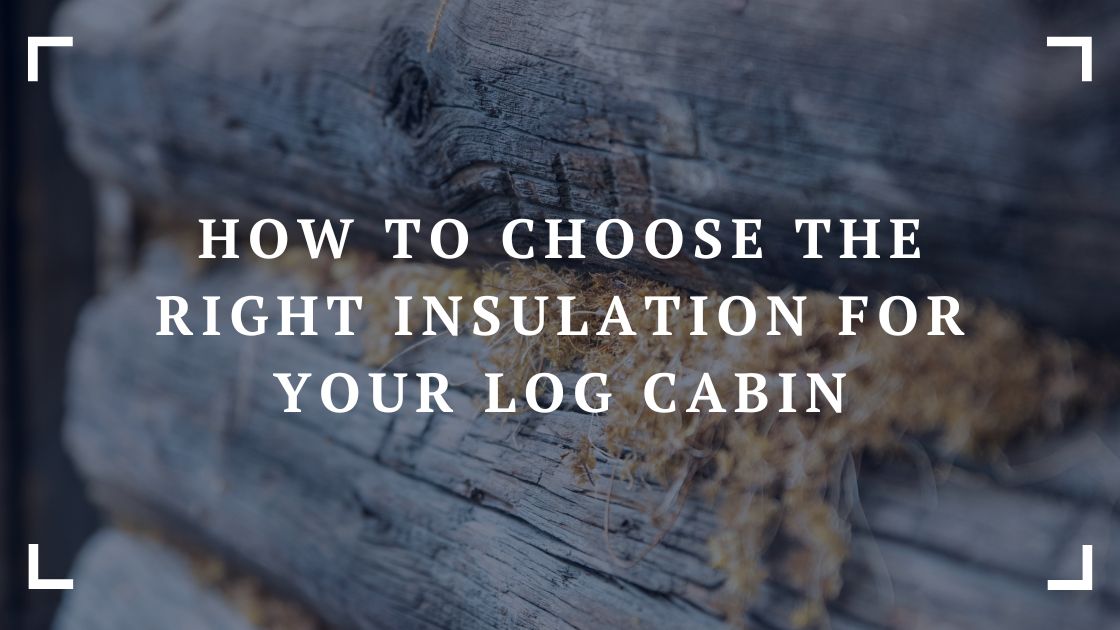Creating an insulated log cabin that stands as a cozy retreat throughout the seasons involves more than just aesthetic appeal; it requires careful consideration of maintaining a comfortable indoor climate efficiently. The right insulation ensures your cabin remains warm in the winter and cool in the summer but also significantly reduces energy consumption and increases the overall comfort of your living space. This comprehensive guide will walk you through the essential steps and considerations in choosing the proper insulation for your log cabin, ensuring it is a haven of comfort and sustainability.

Understanding the Basics of Cabin Insulation
Insulation in a log cabin reduces the heat flow in and out of your home, maintaining a consistent indoor temperature. The effectiveness of insulation is measured by its R-value, which indicates the material’s resistance to heat flow. The higher the R-value, the better the insulation’s effectiveness. For log cabins, which naturally have some insulating properties thanks to the thermal mass of the logs, additional insulation can be crucial in areas with extreme temperatures.
Assessing Your Cabin’s Needs
Before selecting insulation, assess your cabin’s specific needs based on its location, design, and intended use. Consider the climate: Cabins in colder regions will require insulation with a higher R-value to retain warmth. Also, consider the cabin’s design and construction, as some insulation materials better suit your cabin’s architectural features.
Types of Insulation Suitable for Log Cabins
- Fiberglass Insulation: Commonly used in many homes, fiberglass insulation is versatile and can be easily fitted between studs and beams in log cabins. It offers good R-values and is relatively affordable. However, it must be installed appropriately and covered to avoid irritation or health issues caused by fibers.
- Spray Foam Insulation: Offering excellent air sealing properties, spray foam insulation can be particularly effective in log cabins, filling gaps and reducing air infiltration. Its higher R-value per inch makes it ideal for maximizing insulation in limited spaces. Spray foam can be more expensive but is often worth the investment for its energy efficiency and moisture resistance.
- Foam Board Insulation: Rigid foam boards can be used inside and outside the cabin, providing good thermal resistance and reducing heat conduction through structural elements like wood and metal studs. These boards effectively add insulation to floors, walls, and roofs without significant space bulk.
- Cellulose Insulation: Made from recycled paper products, cellulose insulation is an eco-friendly option that can be blown into walls and ceilings. It provides excellent thermal performance and is particularly effective at fitting around obstructions and filling nooks, making it an excellent choice for retrofitting older cabins.
- Natural Fibers: For those seeking sustainable options, insulation made from natural fibers like wool, cotton, or hemp offers good thermal insulation and breathability, contributing to a healthy indoor environment. These materials are renewable and often recycled and provide a green alternative to synthetic insulations.
Considerations for Insulation Placement
The effectiveness of your insulation also depends on where it is placed. In a log cabin, pay special attention to:
- Walls: While the logs offer some insulation, additional insulation may be necessary for extreme climates. This can be added to interior walls without compromising the exterior log appearance.
- Roof and Attic: Heat rises, making your cabin’s roof and attic prime areas for heat loss. Ensure these areas are well-insulated to maintain warmth.
- Floors: Insulating the floor is especially important if your cabin is elevated. Proper floor insulation can prevent cold air from entering and warm air from escaping through the floorboards.
- Windows and Doors: These are common areas for drafts. Consider using insulated or double-glazed windows and sealing gaps around doors and windows to enhance your cabin’s overall insulation.
Balancing Aesthetics and Efficiency
Choosing the proper insulation for your log cabin involves balancing the rustic aesthetic appeal with modern energy efficiency. Innovative insulation solutions can be seamlessly integrated into your cabin’s design, preserving its natural charm while significantly improving comfort and reducing energy costs.
Conclusion
An insulated log cabin offers the best of both worlds: the rustic, back-to-nature appeal of log cabin living combined with the comfort and efficiency of modern insulation technologies. By carefully selecting the right type and placement of insulation, you can ensure your log cabin is a cozy, energy-efficient retreat for years to come. Whether you prioritize sustainability, budget, or ease of installation, an insulation solution fits your needs, making your dream of comfortable log cabin living a reality.


